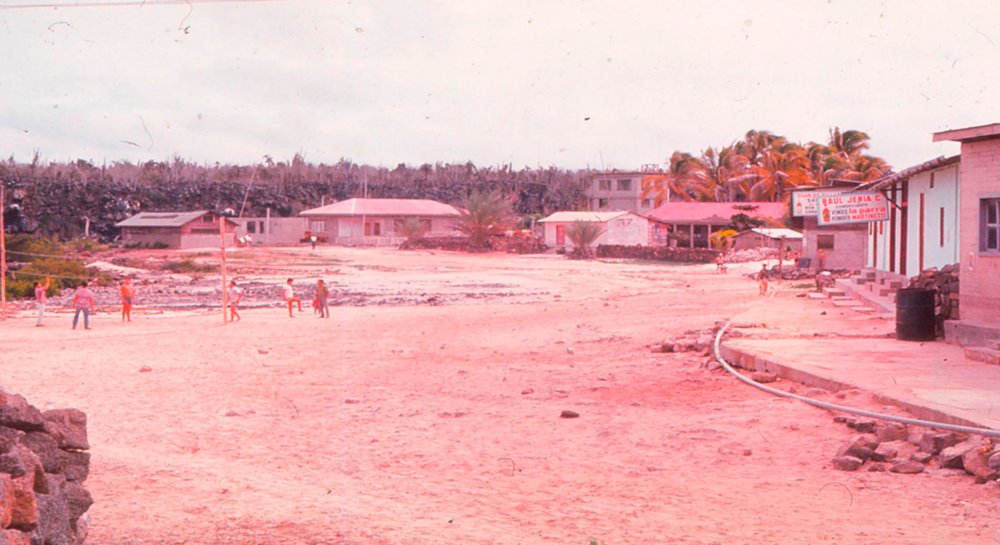
Author: Rolf Sievers
During the 15 years (1964 -1979) that I worked at the Station, I had the good fortune to be part of many expeditions. I visited every larger island and climbed the volcanoes of Isabela Island.
The longest and perhaps most noteworthy excursion I undertook with Roger Perry in 1966.
We left Puerto Ayora with several other scientists on the Beagle II, then captained by Bernhard Schreyer. We were taken ashore at a small cove on the east side of Alcedo. From there it is an easy walk on hard-packed pumice just about all the way up to the rim. At that time there was an active geyser on the inner slopes of the caldera and the water was quite good if one boiled it for half an hour or so, to get rid of the sulfur taste and smell.
We camped there for one night and the next day made our way down on the west side of the volcano to Bahia Urvina where the Beagle was already waiting for us.
From Urvina we sailed to Punta Mangle, Fernandina, where Perry and I, accompanied by a helper and cook Lautaro Moreno, stayed for 10 days. Meanwhile the Beagle returned to Puerto Ayora with the other members of the trip
The idea was to explore the south eastern slopes in hopes of finding signs of the Fernandina Tortoise. The last known specimen was collected by Rollo Beck of the Academy Expedition in 1906. Even though there have been several expeditions to Fernandina over the years, no one had seen any traces of them.
Perry’s motto was to travel as light as possible. Before leaving camp, we took some salt tablets, drank as much water as we could. We carried only one canteen each for the climb.
Knowing that the water of the caldera lake was potable we reckoned that we would get there the same day. Among the essentials, we packed a saucepan, metal mug, a spoon, a piece of plastic sheeting to serve as ground sheet or to catch water and a light rain jacket. I also carried a sturdy hunting knife and Perry his camera.
For food we took packages of Canadian Survival Rations that weighed less than half a pound and which supposedly had enough nourishment to last for three days. Apart from that, we included a bit of oatmeal and a few pieces of chocolate. The survival rations were quite good. They consisted of Horlicks tablets, some sort of crackers that seem to blow up in your stomach, vitamin pills and two packages of soup powder.
From Punta Mangle it is a long haul up to the caldera and the first day we only got to a height of about 3,000 feet where we spent a cold and miserable night in the clouds on rough lava. It had taken more time than anticipated to find our way through lava fields and often had to backtrack when it was impossible to cross one of the many crevices. To make it easier to find our way down, Perry marked our way with toilet tissue. On the black lava it stood out and would cling to it even when it rained. And it certainly made our return much easier.
We collected about half a mug of water each with our plastic sheets during the night and finally reached the caldera floor at midday. I will never forget the luxurious feeling of swimming in the cool lake and drinking the water at the same time.
Our estimate was that there must have been at least 2000 pintail ducks on the lake.
That evening, while sucking on the Horlicks tablets, I was imagining savoring roasted duck.
Leaving again at dawn we reached our camp late afternoon where Lautaro prepared a more solid meal. During the time we stayed on Fernandina we encountered no signs of tortoises.
After ten days the Beagle picked us up. From Punta Mangle we sailed to Tagus Cove. Roger Perry, Richard Foster (a young English man that came as crew member on the Beagle from England) and I set out to explore the upper slopes of Volcan Darwin. Walking along the edges between lava flows and vegetation, it was relatively good going. We saw many tortoises on the more open patches that were a few hundred feet below the rim. To reach the top, we had to cut our way through thick Tournefortia brush. Darwin’s Caldera is relatively small compared to Alcedo and Fernandina and I was struck by the narrow rim.
From where we stood it appeared it would be too difficult to get to the caldera floor, so we decided to camp lower down where we saw the tortoises. Late the next afternoon we were back aboard the Beagle.
There were plenty of goats on Sierra Negra, but in those days, none had been reported to be on Alcedo, Darwin or Wolf. Perry thought that it would be a good idea to cross the few miles from Elizabeth Bay to Cartago Bay. Perhaps it would give us an idea why goats had not crossed the Isthmus. We should soon find out.
The Beagle crew ferried us ashore long before daybreak and Bernhard left immediately to cruise around Punta Albemarle to meet us in Cartago Bay. Little did we realize what we were getting into.
At the time it was believed that we were the first to cross that 12,3 km wide isthmus and that is how it was published Elliot Porter’s Sierra Club publication “Galapagos: The Flow of Wilderness”. However, soon afterwards Porter received a letter from Capt. David M. Payne who had done that crossing much earlier, in 1942! In his letter, shown below, Payne explains quite well what we also experienced.
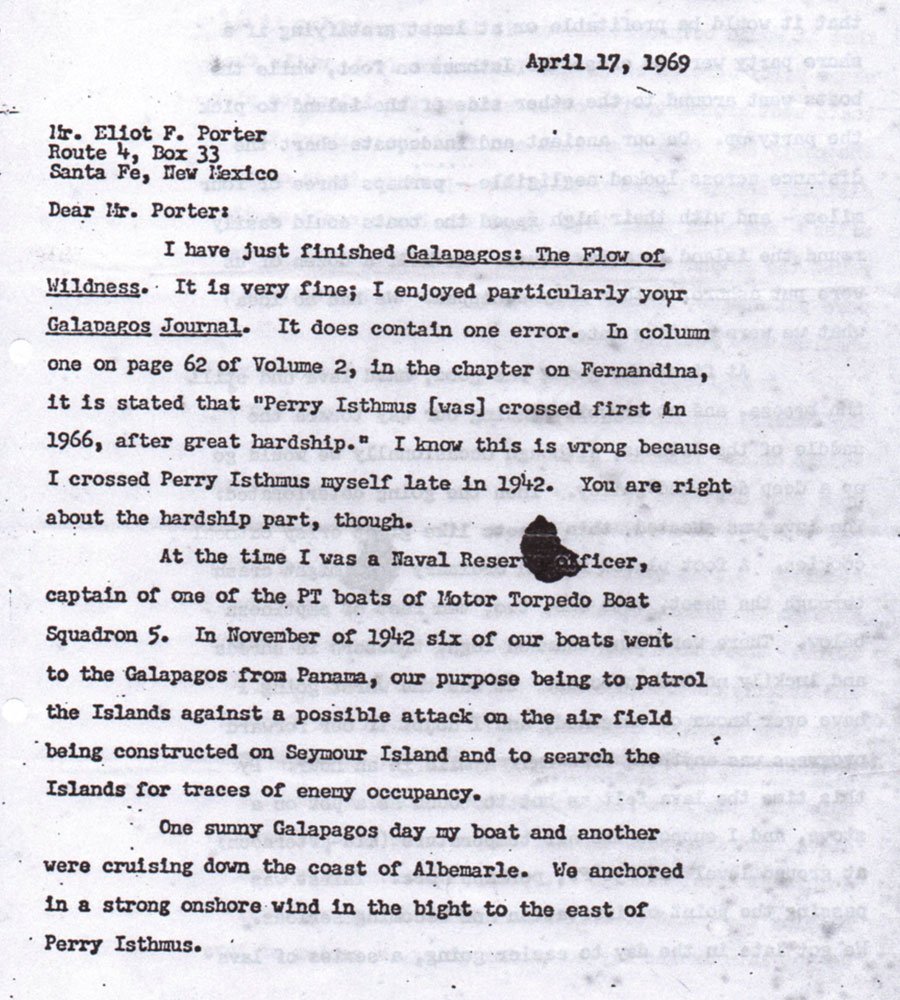
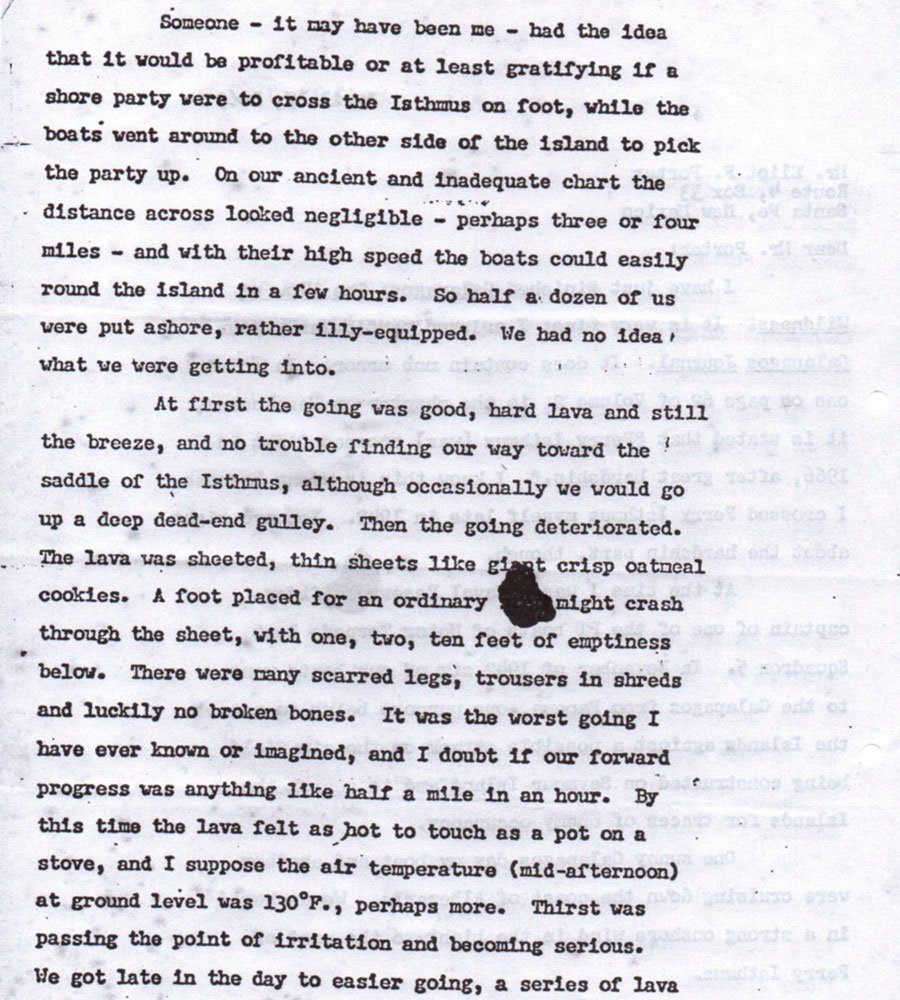
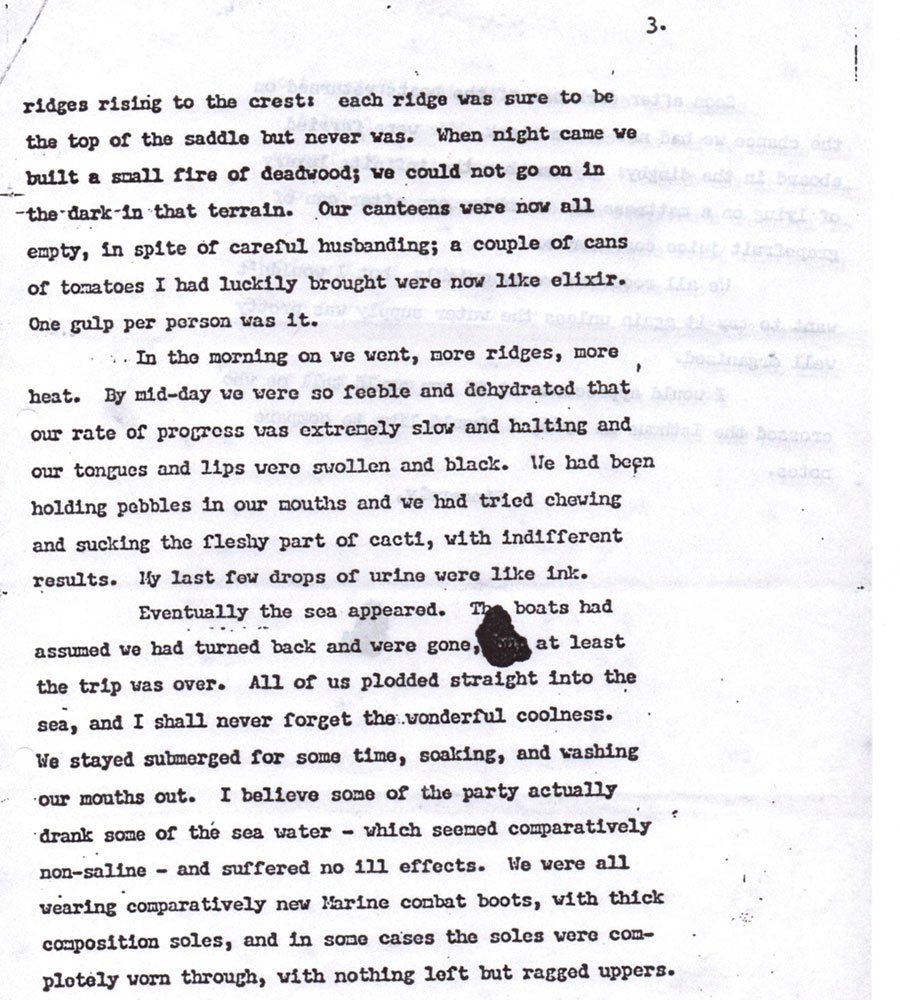
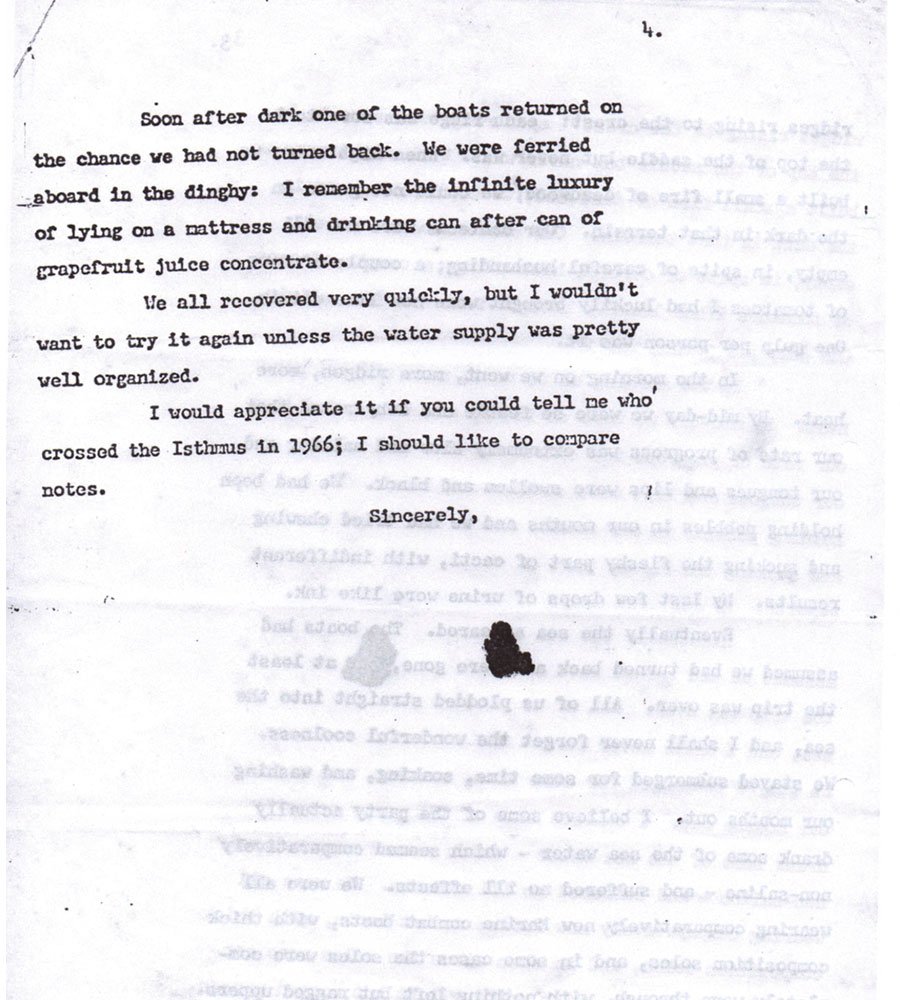
Had we received the account of Captain Payne before our crossing in 1966 we would have prepared better. As it happened, we managed the crossing in a day and reached Cartago Bay with the last light of the day.
Unbeknown to us, however, Beagle II was in trouble. Halfway between Punta Albemarle and Santiago, the injection-pump coupling of the main engine broke. Bernhard sailed the Beagle into James Bay where they met the Station’s Conservation Officer, Miguel Castro, who was there at anchor with his boat, the Odin. With primitive tools Bernhard and Miguel managed to carve a coupling out of a piece of Matazarno, a very hard local wood, and that worked to get the engine running.
Since there was no way to communicate, we did not know what had happened. Having been already one day without water, we chewed on pieces of Brachycereus, just as Capt. Payne and his crew had done. It did not provide much relief. After a second night at Cartago Bay, surrounded by millions of mosquitos, we decided that our only chance of survival would be to try to reach the geyser of Alcedo and we set out early in the morning. When we reached enough height to get a view over the mangroves towards the horizon, we saw the sails of the Beagle. We were elated and made our way back to shore where we were finally picked up, 40 hours later than planned. It turned out to be much more of an adventure than we had anticipated, and we were very lucky to have survived.





